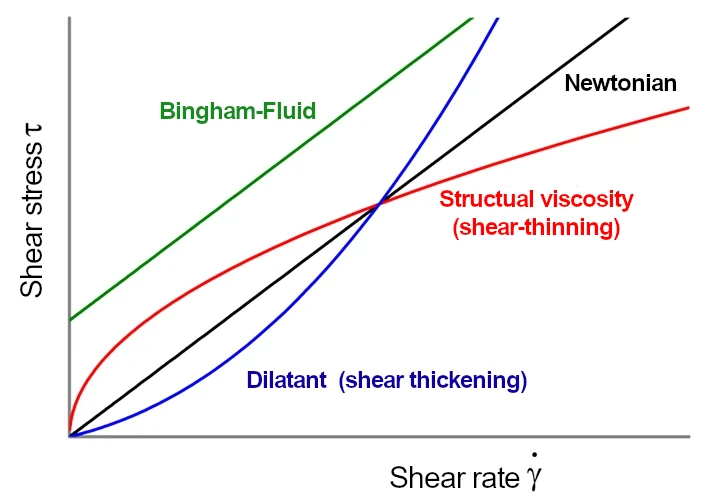Viscosity: The Art of Flowing

Viscosity is the measure of the toughness of liquids and gases. Basically, it is the ability of a substance to flow or deform.

The origin of the word “viscosity” leads us to mistletoe, more precisely to the mistletoe plant genus, which has the scientific name “Viscum”. In the past, bird glue was made from mistletoe, which influenced the name.
Isaac Newton, the famous physicist, made a fundamental discovery about liquids. He recognised the proportionality between the flow velocity and the required deformation force and formulated this in “Newton’s law”.
According to Newton, some fluids, such as water or air, can be described by this law and are therefore known as Newtonian fluids. They behave predictably when it comes to their viscosity.
Behaviour that deviates from this is known as non-Newtonian and is the subject of rheology. Examples of non-Newtonian liquids are polymers and hot-melt adhesives, but also blood or ketchup. The deformation of such materials can no longer be simply described using Newton’s law. Their viscosity changes depending on the shear rate and shear stress, taking into account the duration of the load.

Let us take hot-melt adhesives as an example of non-Newtonian fluids. They contain polymers that are oriented in the direction of flow. This alignment takes time and, at the same time, reduces the force required. The viscosity of a hot-melt adhesive is crucial for its application. With different application speeds and cycles, flow behaviour must be taken into account, whether it is vertical or horizontal application or even spray applications.
You can delve even deeper into the topic in our glossary entry.
Viscosity is also closely related to the cohesion of an adhesive. In general, the following applies:
The higher the viscosity, the greater the cohesion of the adhesive. This means that the substance holds together better and is less likely to spread.
- Our YouTube channel – knowledge to view - 6. Mai 2025
- Efficient adhesive supply with the granulate conveyor: How to optimise your production: - 15. April 2025
- Blocked hot-melt adhesive granules – causes, effects and solutions - 11. März 2025